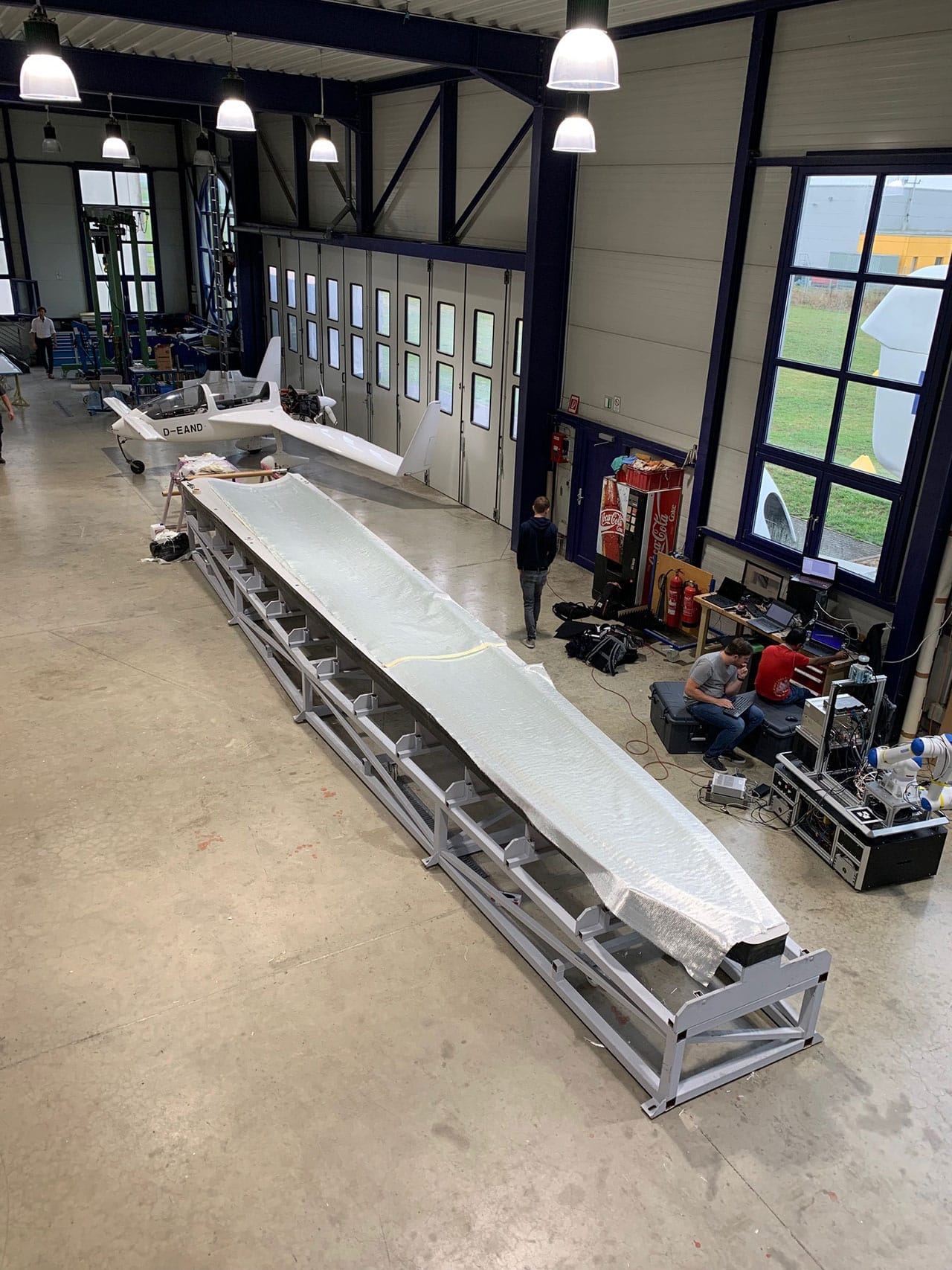
In the production of glass fiber-reinforced structural components, such as those found in rotor blades, the fiber structure is fixed with a resin matrix. Irregularities in the alignment and the flow of fiber reinforcement can alter the structural properties and, as a result, reduce the quality of the final composite material.
Until now, monitoring has consisted of visual inspections. Now, with the “FiberRadar” project, Fraunhofer FHR, together with the consortium partners Ruhr-Universität Bochum, Aachen University of Applied Sciences, and Aeroconcept GmbH is developing a novel method for controlling the manufacturing process of high-strength fiber composites.
The novel radar method, for the first time, allows for checking the alignment of the lower glass fiber layers in a non-destructive and automated manner. The process uses a millimeter-wave scanning system consisting of radar, a fully polarimetric robot, and associated imaging software.
The system also harnesses the polarization of the electromagnetic waves, so it can also identify possible defects through a variation in the direction of polarization. Polarization is a term used in antenna technology to demote the direction of the electric field component of an electromagnetic wave. The robot scans the component, and at each position, the radar performs a measurement, which is then combined into a 3D image by the software.
Conventional radars only have one channel and therefore use one polarization for both transmitting and receiving. On the other hand, the new radar sends and receives signals in two polarizations. This provides high-resolution fiber structure imaging and also makes it easy to expose any defects in the deeper layers. By using radar to scan the individual layers, researchers can also identify any anomalies in fiber orientation and examine the entire material volume in a non-destructive manner.
Thanks to Aeroconcept GmbH’s experience, the technology can be integrated directly into the manufacturing and monitoring process for wind turbine blade production and become a key technology for high-quality composites.
“We are very pleased with the promising results marking the end of the FiberRadar project,” explains Dr. André Froehly, project manager at Fraunhofer FHR in Wachtberg. “We plan to use follow-up projects to further develop the system so that it is ready for use in production processes. We are aiming to improve both the speed and the depth resolution to detect even more potential defects in a shorter period of time,” Froehly explains the next steps. The project was funded by the European Regional Development Fund (ERDF).
Novel method automatically monitors rotor blade manufacturing process
Source: Tambay News

0 Comments